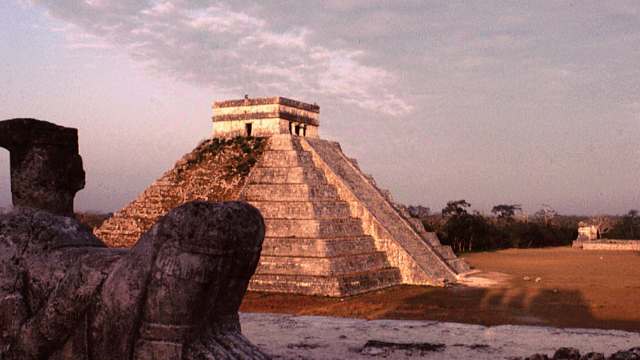In a significant development regarding the long-debated fall of the Mayan civilization, recent research has provided compelling evidence that a prolonged drought played a crucial role in this historical event.
The Maya civilization, which thrived in what is now Guatemala, was renowned for its advances in agriculture, pottery, writing, and mathematics, reaching its zenith in the sixth century C.E.
However, by 900 C.E., many of its major cities were abandoned, prompting centuries of speculation about the causes behind this rapid decline.
A new study published in Science has presented quantifiable data confirming the drought theory. Researchers focused on sediment samples from Lake Chichancanab on the Yucatán Peninsula, an area central to Maya civilization.
By analyzing oxygen and hydrogen isotopes in the lake’s sediment, the team was able to measure past rainfall levels, revealing a significant decline in precipitation over several centuries.
Nicholas Evans, a co-author of the study and research student at Cambridge University, detailed how rainfall in the region decreased by 41 to 54 percent during the critical periods leading to the civilization’s end.
Additionally, humidity levels dropped by two to seven percent, further exacerbating the impact on agricultural production.
The combination of these factors made it increasingly difficult for the Maya to sustain their food supplies, ultimately contributing to their collapse.
Despite this breakthrough, questions remain about the initial causes of the drought. Previous research has suggested that extensive deforestation by the Maya may have disrupted local climate patterns, reducing moisture and destabilizing the soil.
Other hypotheses propose that changes in atmospheric circulation or a decrease in tropical cyclones could also have played a part.
The findings have broader implications today, as they highlight the delicate balance between human activity and climate.
Matthew Lachinet, a geosciences professor at the University of Nevada, emphasized the relevance of these insights, warning that current human-induced climate change could lead to similar patterns of drought in the future, potentially compounding natural climate variability.
While this study sheds light on one of history’s great mysteries, it underscores the need for further exploration to fully understand the complexities surrounding the collapse of the Maya civilization.
As research continues, there is hope that more answers will emerge about this remarkable culture and the factors that led to its demise.




